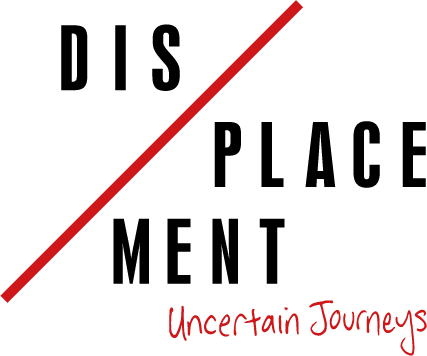About
Botkhali Beach & Black Mangrove Tree, Sundarbans, Bengal
During an expedition to the Sundarbans, Vicky observed and photographed the impacts of environmental change on communities living in the delta region of the Bay of Bengal. Whole villages were moving as land was lost. The mistake of cutting away the mangrove forests – the most effective barrier to the sea – was gaining recognition, but environmental pressures on the area are complex and global.
Following the expedition, and during a residency at Cove Park, Vicky created a set of drawings and wrote a short story about the journey, Breath Carriers, which she and Soumyak Kanti de Biswas performed at Wilderness Festival 2015.
Excerpts from the story, which relate to the drawings featured, are copied below.
Think of a seedling. On a high tide, a buoyant thing.
The seed germinates before separating from the parent tree. This process: vivipary. Vivus – alive. Parere – to bring forth.
The seed germinates inside the fruit of the tree, grows to maturity as a propagule. Together with the capsule that contains it, it drops from the parent. The tide catches it. It floats a few months, drifts a hundred miles, and eventually comes to rest on a bank.
The seedling takes root. It sheds its capsule coat and bud up, radical root down, lodges in the mud.
Once anchored, it produces additional roots, lateral, radiating: a shallow, cable-like network. And from this network, as the seedling becomes a tree, vertical roots project. They stand sentry like, as high as a metre from the waterlogged earth. In each other’s company and in attendance to the tree, these roots spend twelve hours of the day submerged by the tide. But when the water recedes, they get to work, taking in oxygen for distribution along osmotic pathways.
The roots are known as pneumatophors – breath carriers.
The courses of the rivers flowing through the delta change all the time, wearing at islands in different ways.
There is increased flow of water from the Himalayas, as glaciers melt at a greater rate.
This and the spread of damming increases unpredictability of flow.
Sea levels are rising as oceans warm.
I learn that the Indian Plate is tipping, gradually, in a southerly direction, lowering the land.
Add to that increased shipping along the Hugli – all of this can overwhelm an island.
Further south we stand on a beach. It’s a place of devastation. Palm trees, felled by the sea, their stumps, hollowed and darkened by sea water, as if blown apart. Plastics cling to the wreckage of plant life. Concrete ruins by the water’s edge – a village marked out by depressions in the sand, grooves filling with water as the tide comes in. Hundreds of thousands of red bricks, worn by the tide, are strewn along the shore, fronted by a fence of beaten bamboo sticks, and sand bags, open and tossed about.
We move. It’s like walking through a war zone. Apocalyptic.
Vivus – alive. Parere – to bring forth.
The life has gone out of this place. It speaks of loss, lack of love, of parenting gone wrong. It’s a place of betrayal. The forest, cut away – Bon Bibi, guardian deity of the forest, forsaken.
The mangroves were cut back, concrete structures built in their place. Against the sea, they didn’t last long. But they were re-built, further inland, a brick wall and a bamboo fence in front, for protection. Again, they didn’t last long. The government stepped in: more bamboo, more bricks. The wall: rebuilt three times. The village: destroyed, re-built, destroyed, rebuilt. Destroyed. Rebuilt. Like a farce. Funny, if it wasn’t so bleak; if it didn’t feel so grey.
Vicky is a Creative Associate of Transport Theatre and following the expedition to the Sundarbans – which she made with Transport (UK) and Ranan Theatre Company (India) – collaborated with Transport to make The Edge. The Edge weaves tales from the Bay of Bengal and South East coast of England together, and its central protagonist is a climate change refugee. To find out more about the process of making this piece, including the expedition to the Sundarbans, visit Vicky’s documentation of the project at Making the Edge.
DISPLACEMENT
Vicky Long’s work was displayed at the Nansen Initiative Global Consultation, October 2015, as part of the Island Tables installation.

